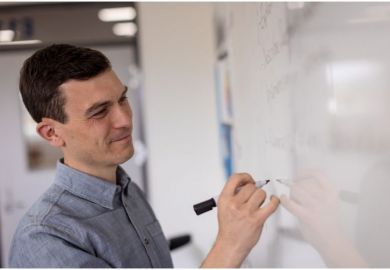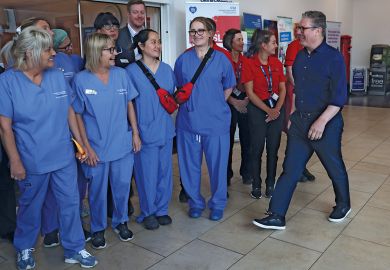The Open University apart, the University of London is by far the largest university in the United Kingdom, and undoubtedly the most complex. Throughout its history the nature, structure and organisation of the university have mystified observers, both from without and within. This is hardly surprising, given that the university as founded in 1836 had neither buildings nor students, but was a government-appointed examining body under the control of the Treasury. At the same time, moreover, the original University of London, founded some ten years before, was transmuted into University College London, a source of some confusion ever since. Books produced to celebrate the first 150 years of the new university, the profusely illustrated official history by Negley Harte, and The University of London and the World of Learning, 1836-1986, edited by F. M. L. Thompson, wisely avoided too penetrating an incursion into its labyrinthine administrative history. Now F. M. G. Willson, a former principal of the university, has tackled the daunting task, covering the period from its foundation until 1858. The new charter of that year signified that the university was no longer an experiment.
The men who shaped the university in its early years were drawn from a variety of backgrounds - lawyers, scientists, technologists, medical men, historians, politicians and bishops. The general tenor of their politics was Whig/Liberal and Radical; Conservatives stood aloof. None of the four bishops was in regular attendance at senate meetings. Portraits are provided of 32 of the principal players, including the first chancellor, William Cavendish, Earl of Burlington, the first vice chancellor, Sir John William Lubbock, and Charles James Foster, who became chairman of convocation in 1858. Pride of place is given to Henry Warburton, the radical MP for Bridport, whose portrait is on the cover. It was Warburton, whose family fortunes had been made in the timber trade, who in 1835-36, together with Thomas Spring Rice and Lord John Russell, drew up the plans for the new university. He died in 1858, having served as a senator and fellow throughout. Willson, indeed, sees Warburton as the most important figure: an ardent and persistent champion of higher education for non-Anglicans, of improved medical training, of democratic constitutional practices and of the extension of degrees to candidates in nonaffiliated institutions. He was equally opposed to plans for compulsory religious exams and excessive fees for examiners.
It was Spring Rice, in a letter of 1838 to the astronomer royal, George Airy, who used the term "Our Minerva" to describe the new university. Minerva was the goddess of learning and crafts and both qualities are evident in this work. The book is based upon substantial research into primary sources, and though not an easy read, division into 22 chapters does help in identification of the several issues. It will be of interest to all who seek to understand the early history and subsequent development of the University of London, while its underlying themes - those of control, finance, curriculum, examination and accountability - are as pertinent in higher education today as when the university came into being 160 years ago.
Richard Aldrich is professor of the history of education, University of London.
Our Minerva: The Men and Politics of the University of London, 1836-58
Author - F.M.G. Wilson
ISBN - 0 485 11479 8
Publisher - Athlone
Price - £45.00
Pages - 363
Register to continue
Why register?
- Registration is free and only takes a moment
- Once registered, you can read 3 articles a month
- Sign up for our newsletter
Subscribe
Or subscribe for unlimited access to:
- Unlimited access to news, views, insights & reviews
- Digital editions
- Digital access to THE’s university and college rankings analysis
Already registered or a current subscriber?



